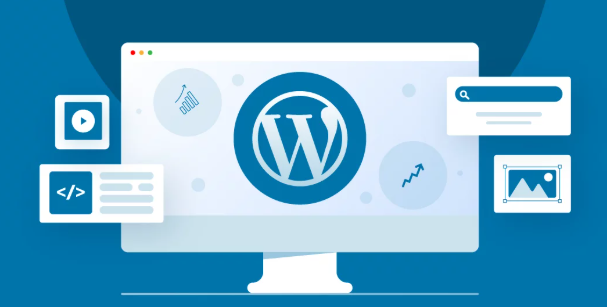The speed of websites is a need of the year 2025. Because Google favors Core Web Vitals and users demand load times that are close to instant, a slow WordPress site will damage your SEO performance, generate more bounce rates, and even cause you to lose conversions altogether. Regardless of whether you have a blog, online store or an enterprise site on WordPress platform, it is necessary to make it fast to achieve performance and profitability.
This article will discuss the best and recent tips on how to optimize the speed of WordPress in the Year 2025, the application of AI, lightweight themes, caching plug-ins, as well as the latest technologies of hosting. You will know by the last minute how to use a slow site into a lightning fast one.
Why Site Speed of WordPress is important in 2025
We have covered a lot of why already; now let us consider the how-to:
User Experience: 50 percent of customers leave a page or a site that still loads after 3 seconds.
SEO Rankings: Page speed is a proven Google ranking factor and with Core Web Vitals.
Mobile Optimization: The combination of mobile-first indexing and the increased importance of fast mobile version of your site can certainly no longer be ignored.
Financial Implications: Loss of up to 7% of the conversion opportunities due to a 1 second web page response delay.
Obviously, performance optimization of WordPress has become something vital rather than optional.
1. Select Lightweight and Modern WordPress Theme
Most WordPress themes are overpacked with extra stuff and scripts. It speaks smarter to employ the use of lightweight themes that are speed and mobile responsive in 2025.
Recommended Themes:
-GeneratePress
-Astra
-Neve
-Blocksy
Performance-first architecture, min CSS/JavaScript, and whole page builder and caching compatibility are the keys of these themes.
2. Use a High-Performance WordPress Hosting Provider
Your hosting provider has a massive impact on site speed. In 2025, the best hosting solutions are powered by:
-NVMe SSD storage
-HTTP/3 and QUIC support
-Global CDN integration
Top Hosting Providers for WordPress Speed:
Also consider AI-powered hosting that auto-optimizes resources based on real-time usage patterns.
3. Install a Quality Caching Plugin
Caching reduces server load and speeds up page delivery. A good WordPress caching plugin can make a huge difference.
Best Caching Plugins in 2025:
-LiteSpeed Cache (especially if using a LiteSpeed server)
-WP Rocket
-FlyingPress
-W3 Total Cache
Enable:
-Page caching
-Browser caching
-Object caching (if applicable)
-Database optimization
4. Optimize Images Automatically
Uncompressed images are one of the main culprits of slow load times. Use next-gen formats (WebP, AVIF) and compress images without sacrificing quality.
Tools to Use:
-ShortPixel AI
-Imagify
-Smush
-TinyPNG (via plugin or API)
Also, consider lazy loading below-the-fold images to improve Largest Contentful Paint (LCP).
5. Minify and Combine CSS, JS, and HTML
Every file your site loads slows it down. Minifying removes unnecessary characters from code, while combining reduces HTTP requests.
Most caching plugins offer this feature, or you can use:
-Autoptimize
-Asset CleanUp
-Perfmatters
Be sure to test after applying these settings—sometimes aggressive minification can break layouts or scripts.
6. Use a Content Delivery Network (CDN)
A CDN (Content Delivery Network) distributes your site content across global servers, speeding up load times for visitors worldwide.
Popular CDNs for WordPress in 2025:
-Cloudflare (still a leader with free and premium tiers)
-Bunny.net
-KeyCDN
-QUIC.cloud (works great with LiteSpeed Cache)
Some hosting providers bundle premium CDN services into their plans.
7. Remove Unused Plugins and Themes
Too many active plugins can create performance bottlenecks. Audit your plugins and remove anything you don’t need. Similarly, delete inactive themes (except a fallback default like Twenty Twenty-Four).
Tip: Use Query Monitor or New Relic to detect which plugins are slowing down your site.
8. Use AI-Powered Performance Tools
In 2025, several tools use Artificial Intelligence to improve your WordPress performance automatically. These tools can:
-Predict traffic and pre-cache pages
-Analyze user behavior to lazy-load critical assets
-Optimize media and scripts in real-time
Examples:
NitroPack: Offers AI optimization across the board.
Cloudflare Zaraz: Loads third-party tools faster using AI.
WP Umbrella: Performance + health monitoring.
9. Enable Server-Side Compression (GZIP or Brotli)
Compression reduces file sizes before sending them to the browser. Most modern hosts support Brotli, which is more efficient than GZIP.
If not already enabled, you can activate it via your .htaccess file, host dashboard, or plugins like:
Enable GZIP Compression
LiteSpeed Cache (if using LiteSpeed server)
10. Monitor Performance with Real Tools
Finally, monitor your improvements using modern tools:
-Google PageSpeed Insights
-GTmetrix
-WebPageTest
-Lighthouse in Chrome DevTools
-Focus on Core Web Vitals:
-LCP (Largest Contentful Paint)
-FID (First Input Delay)
-CLS (Cumulative Layout Shift)
Final Thoughts: Speed Is a Ranking and Revenue Factor
Speeding up your WordPress site in 2025 is more critical than ever. It’s not just about SEO—it’s about delivering value, building trust, and retaining users.
To recap, focus on:
-Using lightweight themes
-Investing in performance-first hosting
-Implementing smart caching and CDNs
-Leveraging AI tools for optimization
-Monitoring and adjusting constantly
With the right strategy and tools, your WordPress website can load in under 2 seconds, keep users engaged, and rank higher in search engines.

